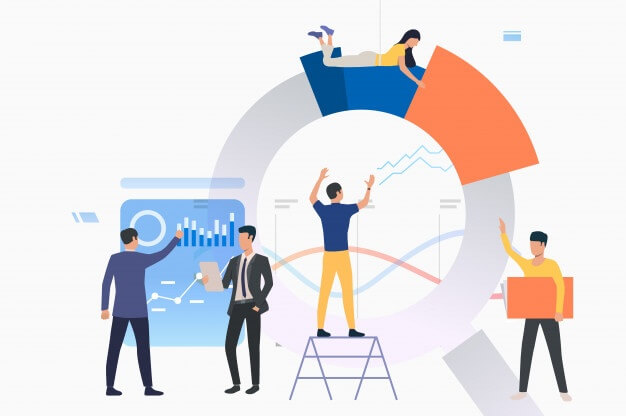HR Functions: Where Can HR Analytics Be Applied?
Introduction:
Businesses in the 21st-century are openly embracing smart technological tools like Artificial Intelligence, Machine Learning and HR analytics to make decisions that impact growth and profits. Once guided by intuition and instinct, HRM decision-making has now changed to that driven by the application of data analytics and objective analysis that provides sound business solutions. HR analytics and software tools enable HR leaders to analyze HR data that drive recruitment, training, compensation, talent management, competency development, attrition and performance management decisions. Businesses today perceive these HR parameters to be important for enhancing the positive experience for the employees, directly impacting improved outcomes for the organization.
HR Analytics and Human Resources Management

HR analytics enable HR leaders to utilize data-driven insights like performance analytics to improve workforce management, enhance positive employee experiences, and improve business outcomes. As per Deloittes’ Global Human Capital Trends report of 2016, a significant percentage – 77% of executive analysts are rated as the topmost priority. Following such analysis and trends, realizing the importance of HR analytics, many companies have replaced legacy HR practices by building people analytics and, according to the group, a strategic role within HR.
While HR analytics is unlikely to provide solutions to every HR challenge, they provide insights based on data analytics. Such insights enable HR leaders trained in HR analytics courses to optimize talent investment by effectively managing recruitment, training, competency development, productivity, turnover, etc.
Application of HR Analytics in Key Aspects of HRM
Successful businesses are invariably built on the understanding that the most valuable asset in the organization is human resources. Human Resources Management (HRM) departments rely on HR data analytics to drive informed decisions. Data analytics and HR and technology-driven intelligence play an important part in the hiring process. Many businesses are applying data science in HR to drive people’s decisions that directly impact employees’ career paths within the organization and their satisfaction levels, resulting in achieving business outcomes.
Key HR Functions That See an Increasing Application of HR Analytics
1) Performance Assessment:
Business organizations can use data analytics tools to establish performance benchmarks and then train existing and to be recruited employees to understand those performance parameters in attaining the benchmark. Companies can use the data collected from the top-performing employees and departments to understand the processes that facilitated them and to refine and set benchmarks accordingly for other employees and departments.
2) Employee Development and Learning Outcomes:
A well-designed vibrant training and staff development program help organizations have a productive workforce and promote employee retention. However, instead of eliciting feedback through a post-training questionnaire, companies can shift focus from mere training satisfaction to tracking the employee’s progress. During the training and further deploying predictive analysis, the companies can use this data to customize training content aligned to employee learning styles at an individual level.
3) Employee Engagement:
Employee engagement is a key metric for a Human Resources Department. Traditionally, this is collected through employee surveys by an outsourced agency. Organizations are increasingly looking at making this an in-house HR exercise that promotes greater ownership of employee data and faster processing. HRs can quickly gain insights from brief surveys and regular engagement using AI tools.
4) Compensation and Promotion Decisions:
Compensation and promotion decisions can often be marred by human biases and nepotism, demotivating high-performing employees. The data-based approach can enable business leaders to analyze the rate at which the employees receive promotions and salary increases and what factors influence those decisions.
5) Understanding and Managing Employee Turnover:
Companies can apply performance analytics to predict which employee is more vulnerable to quitting while also revealing factors that may be contributing to attrition. Often the quality of reporting supervisors may be an issue more than money. Companies can also analyze data on turnover rates, understand trends and address any sudden spikes.
Conclusion:
HR data analytics can significantly aid organizations in improving business outcomes and drive the achievement of improved HR functionality in recruitment, training, development, talent and performance management and address turnover. However, the role of HR analytics should be in balance with the human element of the role and processes to ensure these tools add human value. There are various HR analytics courses that one can take to become a successful HR in a top company.


